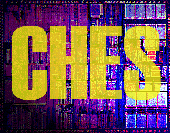
Unfortunately we don't have the abstract.
ABSTRACT: At the Auto-ID Center, we are developing low-cost radio-frequency identification (RFID) systems for large scale deployments as next generation bar-codes. I will describe RFID technology in my talk, summarize our approach and our research, and most importantly, describe the research opportunities in RFID for experts in cryptography and information security.
The RFID tags we are developing are very simple, and contain only a unique, read-only serial number. Furthermore, they have the capability of being permanently deactivated by the user. We therefore provide the user with the facility of opting out of any privacy risks.
As technology improves in coming years, it may be possible to place more computational power and memory on the tag. Users may want to keep tags active, write information on to the tags, personalize them and, perhaps use them at home. What are the risks involved? How can they be mitigated? The challenges then will revolve around how to preserve privacy and security for the user without adding too much complexity to the tag.
I will present the issues we are aware of and, hopefully, initiate a discussion in the security community on future developments in security and privacy in RFID tags.
ABSTRACT: Hardware random number generation is an important part of many security systems. The significance of reasonable design and effective evaluation criteria for physical random number generators cannot be overestimated. Nevertheless, there have been relatively few presentations on this topic at research conferences. This session will provide perspectives from leading experts on research and standards development in this field, in both government and industry sectors.
Biography of Werner Schindler
Education: MS in mathematics (Diplom-Mathematiker): Darmstadt
University of
Technology 1989, PhD: Darmstadt 1991, postdoctoral lecture
qualification:
Darmstadt 1998.
Professional Experience: since 1993 Federal employee at Bundesamt für
Sicherheit
in der Informationstechnik (BSI) in Bonn, Germany; dealing
with various
fields
of cryptography and information science.
Teaching experience: lecturer Darmstadt University of Technology and
University of Bonn.
Main research interests: Side-channel attacks, random number
generators for
cryptographic applications, simulations, measure and
integration theory with
applications.
Biography of Randall J. Easter
Title: Chief Engineer, Cryptographic Module Validation Program
Organization: National Institute of Standards and Technology
Education: BSEE (1978), Pennsylvania State University.
Prior to joining NIST, Mr. Easter worked for the IBM Corporation in
Poughkeepsie, NY. He was Senior Engineer for cryptographic hardware
development; having designed and developed the first validated FIPS 140-1
Level 4 single chip cryptographic coprocessor, the S/390 CMOS Cryptographic
Coprocessor. He is the author of twelve filed patents. He joined NIST's
Computer Security Division in 2000 and is involved with the Cryptographic
Module Validation Program (CMVP). Duties include the testing, evaluation
and validation of high-grade commercial cryptographic modules, to the
writing of cryptographic guidance and standards.
Biography of Thomas E. Tkacik
Title: Distinguished Member of the Technical Staff
Organization: Motorola, Inc.
Education: MSEE (1981) from Caltech; BSEE (1980) and PHd (1986) from
University of Virginia.
Experience: Mr. Tkacik has worked at AT&T Bell Labs, GM
Research Labs,
and Motorola, in processor design, automotive electronics
and networks,
and high level IC design tools, as well as cryptography and security.
For the past four years he has worked on the design and
analysis of cryptographic and security modules, including
random number
generation,
to bring security to consumer products.